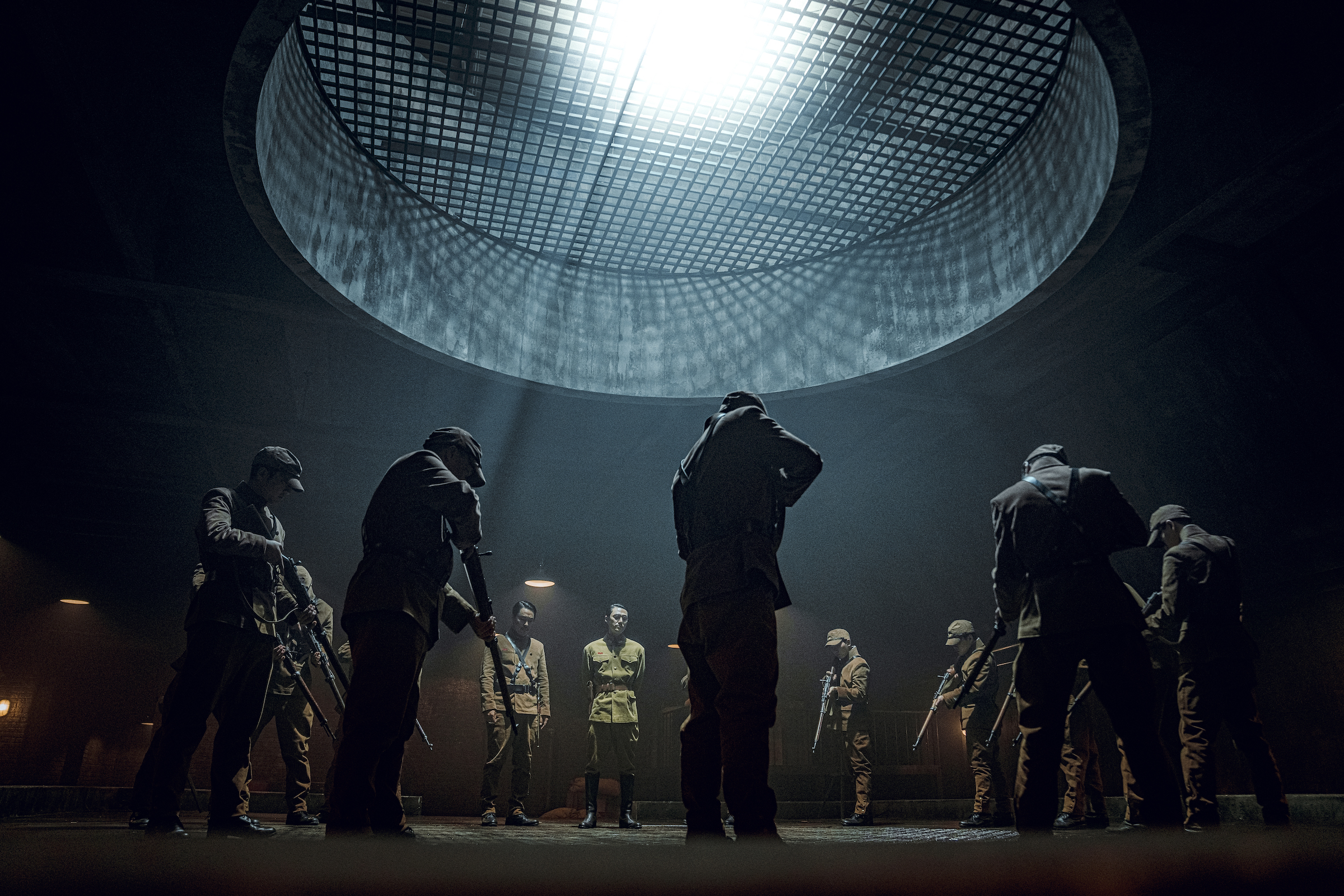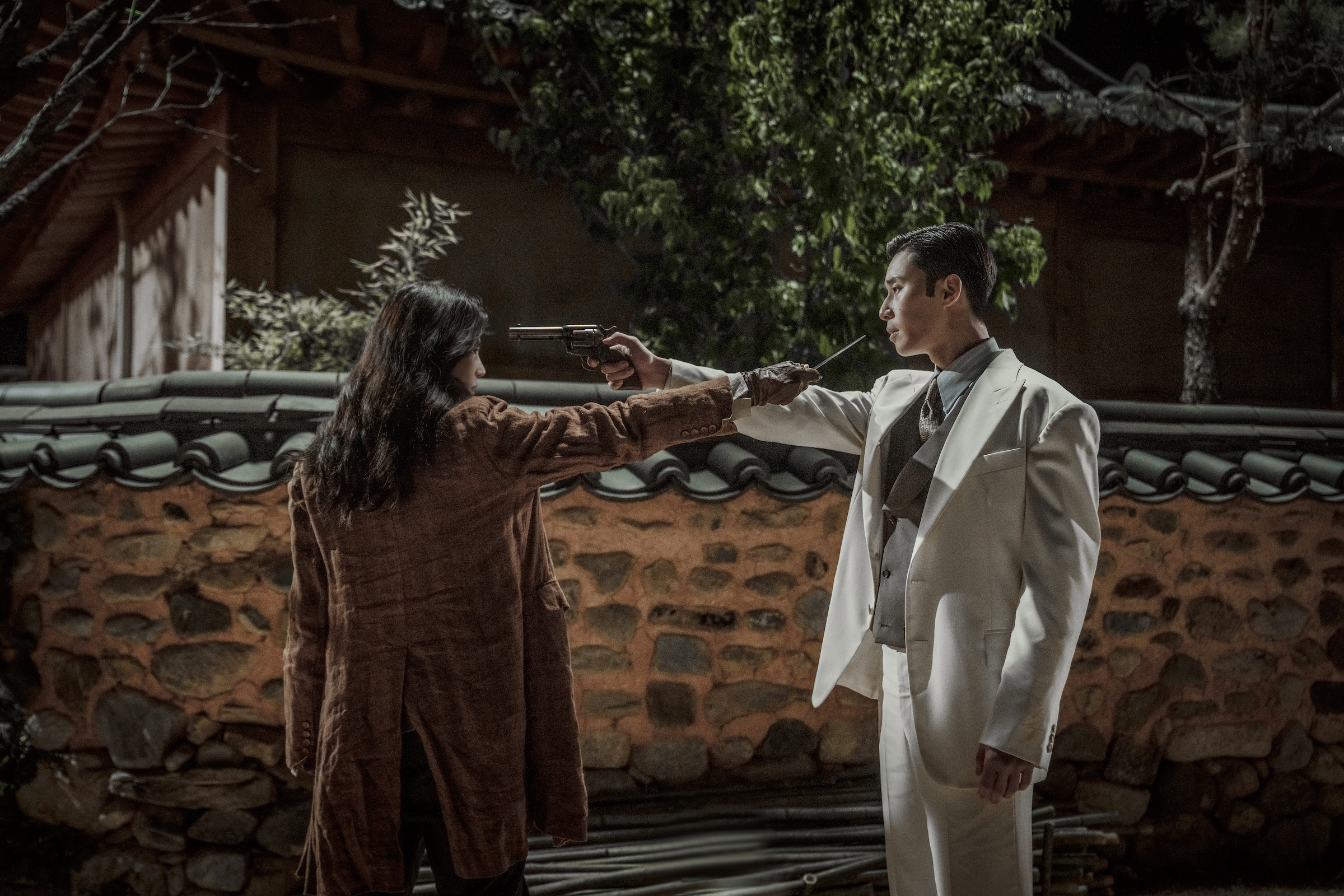Netflix K-drama Gyeongseong Creature, which hits the streamer with its first seven episodes on Dec. 22, opens in 1945, as the Japanese imperial army rushes to destroy the evidence of the lethal human experiments they have been conducting in northeast China. As snow falls on the remote landscape known by the Japanese occupying force as Manchuria, corpses are thrown into piles to be burned. Prisoners are shot as men in uniforms prepare to set the entire complex ablaze.
In this horrific setting, inspired by the real-life war crimes of chemical warfare division Unit 731, the fictional General Kato (Choi Young-joon) worries about his pet project: monsters, born of human experimentation, designed to be weapons in the ongoing world war. He grabs what he needs to continue his “work,” and sets off for another corner of the Japanese empire: Gyeongseong, the city we know today as Seoul.
Netflix goes all in on the historical romance drama

It’s not a secret that Netflix is betting big on Korea. This year, the streamer announced a further $2.5 billion investment in the East Asian country over the next four years, and engagement metrics recently released show that several Korean productions were among Netflix’s most-watched series in the first half of the year. Among 2023’s K-drama slate, however, Gyeongseong Creature is noteworthy for several reasons.
First, it stars some of Hallyu’s buzziest stars: Park Seo-joon (Itaewon Class, The Marvels, Concrete Utopia) and Han So-hee (Nevertheless, My Name, Jung Kook’s “Seven” music video). Second, and perhaps even more significantly, Gyeongseong Creature snagged an initial two-season order—a rarity in Korean TV production. Finally, Netflix is releasing Gyeongseong Creature in December, which sees an elevated level of streaming activity from people home from school, work, and other regular commitments.
The supernatural horror follows Park’s Jang Tae-sang, a man who has risen from poverty to become a successful pawnshop owner. Tae-sang’s life of relative luxury is threatened when the Korean courtesan of a Japanese general goes missing. The general demands our protagonist—known as “Mr. Omniscient” in the city for the way he has his finger on the pulse of all that is happening—find her, or he will strip him of his home, business, and property, and send him to fight in the imperial army. When Han’s Yoon Chae-ok, a woman who specializes in finding missing people, arrives in Gyeongseong from Manchuria, applying her particular skill set to the search for her own missing mother, the two characters’ paths intertwine, leading them to a military hospital where General Kato is continuing his sadistic experiments on the people of Korea.
An historical context for Gyeongseong Creature’s setting

While Gyeongseong Creature is a fictional story, it takes its historical setting seriously. “There was a lot that we paid attention to in trying to recreate what old Seoul was like back in 1945,” director Chung Dong-yoon tells TIME, through a translator, during a conversation with press. “However, there wasn’t that much data that we could rely on. And, because I haven’t experienced that era, there were a lot of concerns when I started working on it. I went into it thinking it was going to be nearly impossible to recreate the time perfectly, so instead I tried to focus on the overall sentiment of the era—the overall look and feel that the time must have had back then.”
Japan annexed Korea in 1910, occupying the peninsula until 1945, when the Axis powers lost World War II. Gyeongseong Creature is set roughly six months before Japan’s surrender. “Before Japan was defeated, a majority of Koreans lived miserably,” Su-kyoung Hwang, a lecturer in Korean Studies at the University of Sydney, tells TIME. “Ordinary Koreans were subjected to an aggressive assimilation project under the naisen ittai. They had to worship in Japanese Shinto shrines, recite an oath to pledge their loyalty to the Japanese Emperor, [and] change their names into Japanese. [They] were subjected to extraordinary censorship and loss of freedom.”
When Japan entered World War II in September 1940, Koreans too were “thrown into the wartime chaos and cultural policies,” says Hwang. Young Korean men were forced to enlist in the Japanese military, and tens of thousands Korean girls and women were forced into sexual slavery, becoming “comfort women” for the Japanese military. Others were sent to work in Japanese factories and mines, says Hwang, or starved due to Japan’s wartime rice extraction. Those who dissented, fighting for Korean independence, faced consequences such as imprisonment, torture, or death if caught.
“Historical content, especially those related to the Japanese colonial period, has always been a popular topic with Korean audiences,” says Lee Jeeheng, a film lecturer at Seoul’s Chung-Ang University. Bridal Mask, an historical drama set during the 1930s Japanese colonial era, took over the Korean cultural conversation when it aired in 2012, with more than 27 percent of Korean viewers tuning in for the finale. Other recent, popular examples of media set during the time period include Park Chan-wook’s 2016 thriller-romance The Handmaiden and Netflix’s 2018 drama Mr. Sunshine.
“The colonial city of Gyeongseong, which was forcibly brought into the modern era, was a hybrid space where traditional Korean hats (or 갓) and western hats coexisted, meaning that the pre-modern and modern worlds coexisted,” says Lee.. “Gyeongseong during the colonial period is a time and space where patriot and quisling [a citizen of an occupied country who collaborates with the occupying force], tradition and modernity, romance and oppression are all in one place, which is very appropriate for the backdrop of cultural popular content.”
Of course, when representing complex, real-life history in media, there is always a risk of prioritizing entertainment value over faithfulness to the lived experience of real people. “There is also room to criticize the attitude of overly spectacularizing in history representation,” says Lee. “Even if it plays a role in enhancing the identity of a nation-state, visual media such as dramas and movies are basically a medium that does not allow us to keep an objective distance. This is why there are critiques to be wary of distorting history by leaning too much towards spectacle in historical content.”
Life—and dissent—under Japanese occupation

In the first episode of Gyeongseong Creature, a group of Korean dissenters are arrested for writing and distributing an underground newspaper with a report on the U.S. firebombing of Tokyo. The Korean flag, called taegeuki, hangs on the walls of the newspaper office. Those captured are given a “choice” to join the imperial army or go to the “torture chamber”—presumably Seodaemun Prison, a real historical site where Korean liberation activists were sent that is mentioned later in the episode. “The 1930s and 1940s were the worst time for dissenting Korean intellectuals,” says Hwang. “They suffered severe censorship and surveillance. If they did not collaborate with the Japanese colonial regime, they had little choice but to remain silent or be tortured and killed for resisting and speaking up.”
While Gyeongseong Creature brings viewers into fictional versions of some of the city’s darkest corners under Japanese colonial rule, the life that Tae-sang has managed to build for himself is bright and shiny. As the owner of the House of Golden Treasure, he has accrued wealth for himself and shielded a small group of employees from the worst parts of colonial life. “1945 was a time for Korea where sadness and happiness coexisted,” says director Chung. “And so I wanted to bring that and represent that stark contrast through the spaces of Ongseong Hospital and the House of Golden Treasure. So, when you look at the House of Golden Treasure, it gives you a very happy, bright vibe, whereas when you go to the Ongseong Hospital, a lot of darkness and sadness is conveyed.”
Tae-sang lives in Bukchon, which was a predominantly Korean neighborhood during colonial rule, but he runs his pawn shop on Namchon’s Bonjeong Street, where Seoul’s tourist and shopping district Myeong-dong is located today. For Gyeongseong Creature star Park Seo-joon, the division of the city during the colonial period was “quite interesting” to learn. “Right now, we divide Seoul into north of the river and south of the river, based on Han River, which runs through Seoul,” says Park, through a translator. “But, at the time, I learned that we called it Bukchon and Namchon—which is like “north village” and “south village”—divided by the Cheonggyecheon Stream.”
By 1945, there were about 800,000 Japanese living in Korea, and Namchon was the center of Japanese settler colonial life in Gyeongseong. According to a retrospective piece in The Korea Times, because of the significant Japanese population, more resources went into modernizing Namchon, and many of the neighborhood’s houses had running water and electricity. The area became a “major center of cultural and commercial activity,” and four of the city’s five major department stores were located there. “Colonialism is a complex experience,” says Hwang. “The Korean upper-class who complied with the Japanese were allowed to own large businesses and factories; some worked for the Japanese or went to Manchuria to expand their businesses. A few of the upper-class Koreans led a dual life of supporting or funding Korean resistance while collaborating with the Japanese.”
Supernatural horror as a thinly-veiled metaphor

While we get hints of the cruel realities of colonial rule across Gyeongseong Creature’s setting, the series reserves its most extreme, albeit fictionalized examples for one particular place: Ongseong Hospital. Like American anthology TV show The Terror, which used monster horror to imagine a fictionalized account of Captain John Franklin’s failed 19th century expedition to the Arctic, Gyeongseong Creature uses supernatural elements to communicate the sheer horror of colonization. At Ongseong Hospital, there are literal monsters, but they are far less chilling than the Japanese general who carries out a system of medical experimentation on men, women, and children. They are far less chilling than colonization or world war.
From Bong Joon-ho’s 2006 monster film The Host, which was inspired by an incident when American army officers ordered a mortician to dump formaldehyde into Seoul’s Han River, to 2022 zombie drama All of Us Are Dead, which uses an undead outbreak to explore a culture’s anxieties about failing to protect its young people, Korean media has had great success mixing supernatural horror with real-world, socio-political themes. “It is not that Korea is particularly good at mixing horror with social/politics, but in general Korean content is inherently socio-political,” says Lee. “This is due to the country's unique history of being forced to face modernization at the turn of the 20th century and experiencing compressed socio-political upheavals such as colonization, war, dictatorship, and democratization over the ensuing 100 years of history.”
Gyeongseong Creature is a story about a world that is rapidly changing. Swords coexist beside guns, cars alongside palanquin. Those of us watching at home know that, while liberation is technically coming, Korea is about to be plunged into yet another occupation and war. In this maelstrom, we get a story of monsters and human malevolence, but it’s that feeling of the ground shifting beneath a society’s feet that may be most relatable and, ultimately, cathartic for modern viewers. We are living in uncertain times. Gyeongseong Creature’s story may be set over 75 years ago, but it is also about the world we live in today.
The first seven episodes of Gyeongseong Creature are now available to stream on Netflix.
More Must-Reads from TIME
- Caitlin Clark Is TIME's 2024 Athlete of the Year
- Where Trump 2.0 Will Differ From 1.0
- Is Intermittent Fasting Good or Bad for You?
- The 100 Must-Read Books of 2024
- Column: If Optimism Feels Ridiculous Now, Try Hope
- The Future of Climate Action Is Trade Policy
- FX’s Say Nothing Is the Must-Watch Political Thriller of 2024
- Merle Bombardieri Is Helping People Make the Baby Decision
Contact us at letters@time.com